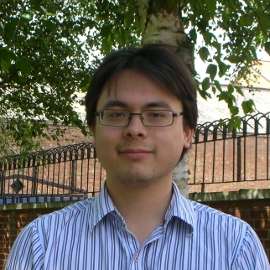You are sitting in the choir stalls of the Royal Festival Hall, watching the ceramic artist and writer Edmund de Waal address you, his back to an enormous sea of empty, grey, imposing seats. He is delivering a vivid narrative account of a day in the life of a young aristocratic Jewish boy in early 20th-century Vienna. He puts you, his audience, in the protagonist’s shoes, referring to this character as “you”. Quite taken with this technique, you later decide to write your review of the event in the same style.
Having been well briefed by the copious literature surrounding the event – part of the Southbank Centre’s The Rest is Noise festival celebrating 20th-century music – you know that this young boy’s stroll along the Ringstrasse must end with his attending a performance of Arnold Schoenberg’s daring, dissonant Chamber Symphony no. 1. And you know as well that this concert, on 31 March 1913, sparked a riot so great that the police were called in. You are surprised, however, when the 2013 concert begins with a gentle waltz by Johann Strauss II, and yet more surprised that this waltz was arranged for chamber ensemble by Schoenberg. This is the music, de Waal reminds you, that would have filled the life of a young aristocratic child such as our protagonist: light, amusing, calm.
The walk de Waal describes to you takes in a slice of city life which shows the upper classes’ remove from the artistic and intellectual avant-garde. You become particularly aware of the gulf between popular musical styles (in addition to the Strauss, you hear an impressive but frothy violin showpiece by Fritz Kreisler, played delightfully by Thomas Gould and pianist John Reid) and the intellectual, ostensibly “higher” musical ideas emerging from Schoenberg and his circle. Such ideas are intended to sit in line with innovations in other intellectual fields (Klimt, Freud and their ilk), and not in line with traditional artistic values, or the idea of art as entertainment. You realise the basic irrelevance of Schoenberg’s sincere but bookish, angst-ridden worldview to the comfortable lifestyle of the child. As the Aurora Orchestra take their places on the stage to perform the Chamber Symphony, you imagine the shock that the work must have caused its polite, indifferent audience.
It isn’t just the work’s dissonance which is startling, remarkable though this is – especially in the RFH, where the acoustic allows the harsh woodwind writing to overpower the strings. Equally startling for our young hero, you suspect, is the basic idea that music might be like this at all – rather than a passing amusement, this is music which sets out to challenge, to unsettle. At times, you note, the sonorities are deliberately unpleasant. You recall that the same composer also arranged that friendly Strauss tune; it’s clear that the toughness of the Chamber Symphony, its utter lack of compromise, is Schoenberg’s point.
It strikes you that this particular 1913 riot was far more important than the more famous one, that at the Parisian première of The Rite of Spring. In a way, the Viennese riot is not yet resolved – while Stravinsky’s provocative ballet music has gained a ton of street cred, its riot held up as a sign of its musical power, Schoenberg’s crotchety symphony has continued to pose the same bold questions for a full century: what is this music for? Should you even enjoy the sounds it makes? Or is it, rather like a gruesome painting, meant to unsettle, to ask impossible, unresolvable questions?
In between thinking such things, you note that you would have been very lucky to hear performances of this quality on a brief walking tour of Vienna in 1913. The Aurora Orchestra deliver a passionate performance which suggests that they believe, quite rightly, in the real power of this remarkable music. You try to discard conductor Nicholas Collon’s uncanny resemblance to Simon Amstell, and focus instead on the amazing energy he brings to the podium.
After the performance, a string of clangorous discords still ringing in your head, you do not riot. You try to put yourself into the mind of that posh Viennese boy, but you can only imagine him feeling bafflement rather than outrage. You long for an age in which abstract concert music like this aroused such incredible passions in its audience, when aesthetics were, quite literally, worth a fight.


